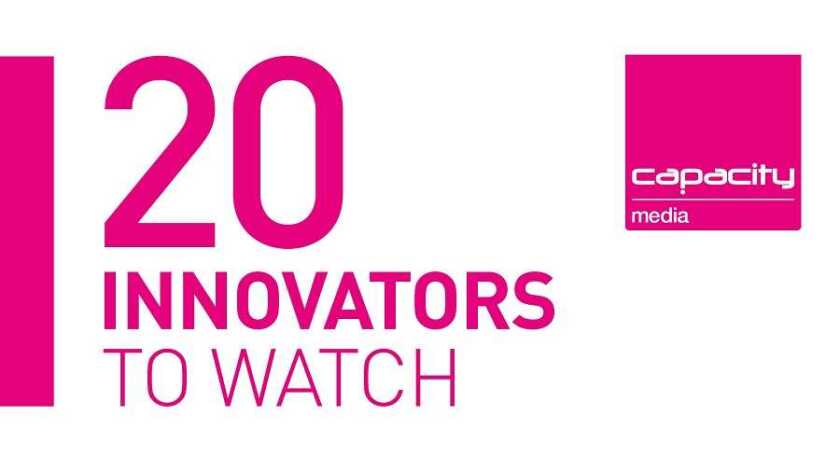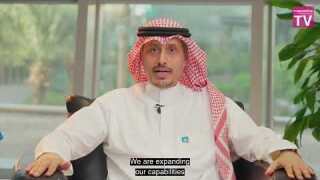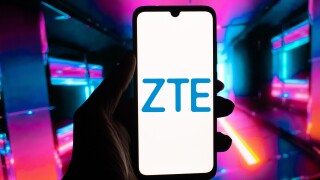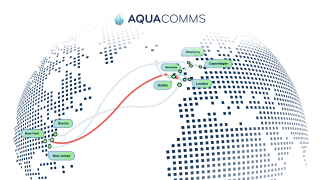Ajay Chitkara’s leadership style is succinctly described as simplify and transform. As a result of this approach he has helped Airtel’s global business grow to over 1,200 customers, achieve a high customer satisfaction score and develop a team with the highest productivity index.
This success has been achieved by Chitkara’s sharp focus on driving innovative business models, strategic network infrastructure growth and strengthening core business processes for improved customer experience.
Chitkara believes technology has the power to improve the way the businesses work and operate. Under his leadership a number of innovative products and solutions have been developed such as the carrier digital platform and bandwidth-on-demand platform for global carriers, carrier billing platform and content.
The company has developed IP peering ecosystems for OTTs and content players, plus next generation data centres for large enterprises across the globe that are eyeing India as the next big destination for growth.
This year Alexandre Pébereau made his triumphant return to the wholesale telecoms industry after a short break.
Within a matter of days he announced that his new company, Tofane Global, was to acquire two substantial international businesses.
The first acquisition was KPN’s wholesale operation, iBasis; the second was the wholesale voice business of the Altice Group, which owns French mobile
operator SFR and the former Portugal Telecom. Pébereau says the two deals will push Tofane to a leadership position in the wholesale business.
He is leading the charge in a new wave of much-needed consolidations in the industry and challenging old business models in the process.
Once both deals are complete Pébereau will be busy integrating the two companies into Tofane. But he still has his eyes set on future acquisitions and deals in the sector, saying that “there is money available for transformation and consolidation. It’s about having a clear business model with a track record.”
Andreas Hipp is described by his team as a man who embodies the true essence of innovation, entrepreneurship and passion. Having successfully founded and led Epsilon, he is now again building innovative solutions that will enable the transformation of the industry.
A little over a year after taking the reins at Cataleya, Hipp has succeeded in doubling its number of customers and revenue, while launching disruptive business models, partnerships and cloud platform solutions.
He also is the founder of Incipio, a start-up accelerator through which he promotes entrepreneurship and innovation, while keeping humanity and society in mind.
Through this initiative, he has made contributions to four promising start-ups – Cataleya, Cirrus Core Networks, Teragence and Resolver. Additionally he is a member of YET, the Young Entrepreneurs Taskforce, an organisation that creates opportunities for young businesses and programmes that foster innovation and social inclusion.
Bankim Brahmbhatt has more than 27 years’ experience in the industry, and through his strong business acumen, keen leadership skills and foresight, he has enabled the company to scale up to its global footprint.
An early opportunity identifier, Bankim has worked closely with multi-functional teams across all four of the company’s divisions to develop and launch new products.
These divisions are Broadband Telecom, BridgeVoice, CallnRoam and Panamax.
He has been an innovator producing disruptive products like BridgeVoice Pluto which have changed the course of online routing.
Mist is the first AI-driven WLAN and indoor location services company that is changing the game when it comes to next-generation Wifi and cloud services.
Formed of the who’s who of the wireless space, Mist’s team comes from the likes of Cisco, Trapeze, Aruba, Airespace and Aerohive. Bob Friday is the chief technology officer and co-founder of this disruptive company leading the charge in next-gen Wifi and disruptive location-based services.
As a wireless entrepreneur Friday is focused on developing and bringing to market unlicensed wireless technologies. He was also a key contributor to the HS2.0 industry standard and holds over 15 patents.
Prior to Mist, Friday served as CTO at Cisco and co-founded Airespace, a radio and mobility architecture company. Friday is a champion of disruption, and Mist frequently works with data and AI startups such as Ople, Cortical.io, Medial EarlySign and Experfy.
As a former technology executive at both Vodafone and then the GSMA, Dan Warren has been instrumental in developing a number of specifications and innovations.
He led the GSMA’s definition of VoLTE for the global industry, as well as being a lead technology expert on rich communications and all IMS-based projects, embedded mobile and WiFi roaming.
This unified the technology for the placing of high-quality voice calls over higher-capacity 4G networks. When he joined the GSMA back in 2007 he also led on projects on IP-based interconnect, application awareness and quality of service. Now at Samsung, Warren is in charge of creating mobile networking equipment compatible with current existing 5G standards, as well as helping to create 5G-ready smartphones and other areas within the 5G ecosystem.
Warren is tasked with spotting technological innovation and market opportunities that can be used to create new Samsung products.
Ellie Sweeney has worked in the global telecommunications industry for 20 years and has held key senior roles in consumer, small business, enterprise and government and operations divisions.
Earlier, as executive director for global wholesale at Telstra, Sweeney was responsible for leading, communicating and executing the global wholesale and over-the-top strategy.
Prior to that, she was executive director of solutions sales at Telstra, leading the domestic and global sales teams across voice, mobile, data, cloud, UC, security, managed services, industry solutions and alliances. Throughout the year the company has unveiled a number of expansions to its network.
Telstra boosted its Middle East business expanding its programmable network to a new point of presence in Dubai.
The new PoP will offer flexible and dynamic access to Telstra’s high bandwidth, low latency and secure network to support businesses operating in the region.
Enrique Blanco joined Telefónica roughly 26 years ago and though he has held numerous positions with the company, currently serves as global chief technology officer of Telefónica, within the global resources division.
During his tenure, Telefónica has successfully ushered in a period of pre-5G initiatives at the company and has been a noted advocate of Telefónica’s move to virtualisation.
In September 2017, Telefónica and Nokia carried out tests to evaluate technologies that are on the way to 5G.
Using Nokia’s 4.5G and 4.5G Pro and 4.9G technologies to conduct trials that make the most of Telefónica’s existing network assets, helping the company to meet the growing demands of individual subscribers and IoT.
Additionally, it was under Blanco’s influence that Telefónica completed its first massive MIMO trial in Europe with ZTE, as well as partnership with Ericsson to demonstrate remote driving technology using 5G connectivity at MWC 2017.
Funke Opeke is founder and CEO of MainOne, which built west Africa’s first privately-owned subsea cable system that interconnected Nigeria, Ghana and Portugal in 2010.
Under her leadership, MainOne has grown to become a leading provider of wholesale and enterprise connectivity and data centre services across the region – and the company has played a major role in changing west Africa’s internet landscape.
In March 2018, the company embarked on an ambitious collaborative project with Avanti to build a satellite gateway. Avanti’s earth station will be hosted on MainOne’s data-centre operation MDXI’s satellite farm in Lagos.
Expansion has also been top of Opeke’s plans for the company.
In April 2018, MainOne was granted a C1B licence allowing it to expand national and international connectivity services in Côte D’Ivoire (Ivory Coast). The company will now be able to land its submarine cable and build transmission infrastructure in the country.
Gal Hochberg is the co-founder and CEO of Clear, a blockchain technology company that aims to transform global enterprise payments across various industries.
Throughout the past 12 month Hochberg has proved himself a true innovator in his field. Earlier this year Clear, under the leadership of Hochberg
and his co-founder Eran Haggiag, completed a blockchain trial in partnership with Colt and PCCW Global, believing that the technology will reduce fraud and settlement times and increase efficiency.
In this first proof of concept Clear was able to settle a month of traffic in less than one minute between the two carriers.
Outside of his disruptive projects, Hochberg also co-founded HiredScore, an AI HR company used by Fortune 500 companies to identify the best candidates for roles.
Appointed in 2016, Håkan Eriksson joined Telstra from Ericsson where he served as group CTO and CEO of Australia and New Zealand. For the last two years Eriksson has been focused on guiding the company to become leaders in key technologies, drive value through advanced capabilities and accelerate business and cultural innovation.
Since then Eriksson has kept true to this vision with the development of Telstra’s A$6 billion services and solutions business for enterprise. The company increased its European footprint with the availability of its programmable network via new points of presence in Frankfurt and Paris.
It has expanded its service to provide more bandwidth options and lower latency on its Hong Kong to Singapore and Japan to Hong Kong subsea routes.
As for investing in innovations, at the start of the year Telstra launched a new 5G innovation centre in Australia aimed at testing and developing next generation mobile services ahead of 5G.
AWS has grown to become a $20 billion run-rate business, growing by about 45% year-on-year with a market share of approximately 35%. The rise of AWS is thanks in part to people like Ian Massingham, the company’s chief evangelist for EMEA.
With a role that many companies would describe as developer relations, Massingham educates and builds awareness among software developers and architects, who use the vast array of APIs available within AWS, so that they can be affective users of the platform and how to put AWS to work to help them build products or services. With over 20 years’ experience in the IT industry, Massingham has a individual technological interest in the development of connected device and IoT applications, and in server-less architecture patterns for the deployment of applications in the AWS cloud.
Working with start-ups to large enterprises, he brings innovative thinking back to headquarters to improve their services.
Jerzy Szlosarek, CEO of Epsilon, makes it onto our list because of his vision in executing cloud-centric networking. For the last 12 months he has been spearheading initiatives around inter-carrier automation, federated APIs and delivering 100G on-demand from a web-based portal.
As part of his inter-carrier automation strategy, Epsilon’s infrastructure has been opened to the world’s largest networks so that they can offer on-demand connectivity anywhere in the world.
Through APIs, Epsilon has turned networking into a utility that can be integrated into existing platforms and used by all kinds of service providers and start-ups.
The 100G on-demand service is preparing the network to serve the massive amounts of demand generated by new cloud, IoT and big data initiatives.
With a 20-year career that started at Ciena and then took him to Dynergy Europe, gradually Szlosarek is preparing Epsilon’s partners to deliver the future of networking.
Since his appointment as ETSI director general in 2011, Luis Jorge Romero has led the steady charge on the much-needed development of technology specifications across the industry.
These include the oneM2M global standards initiative for machine-to-machine communications and the internet of things (IoT).
This brings ETSI together with eleven other leading standards bodies, forums and consortiums throughout the world, and with 200 of their member companies to define the specifications needed for scalable, secure deployment of M2M and IoT services.
He has also ensured that ETSI is well positioned to take an active role in the development of future 5G standards, both within ETSI and 3GPP, of which ETSI is a founding member.
In May 2016 he said: “We have set a clear calendar to get to 5G, which will follow the normal process in the 3GPP. In late 2019, the plan is to make the submission to the ITU on 5G.”
It was two years ago that Dr Marcus Hacke founded ngena, the Next Generation Enterprise Network Alliance. The mission of this organisation is to foster network services built on shared partner networks around the world.
As a result of his leadership, the organisation has gone on to recruit the likes of Deutsche Telekom, CenturyLink, Reliance Jio and SK Telecom as its four founding members, with a total of approximately 20 active members today.
Ngena was Hacke’s brainchild. He is an avid champion and advocate for such concepts as the formation of a strong global alliance of leading telecommunication providers, connecting the regional networks of telcos to one SD-WAN, use of end-to-end automated service orchestration to provide hybrid VPNs and creation of a central B/OSS cloud portal.
Prior to founding ngena, Hacke served for over ten years at Deutsche Telekom.
Mayra Arevich Marin has been president of Empresa de Telecomunicaciones de Cuba (ETECSA), the Cuban fixed and mobile operator, since 2012. During her six-year term in the role Marin has managed to navigate the tumultuous position.
The Federal Communications Commission permitted direct phone connections with the US in 2015 and a number of US operators set up roaming deals. In April 2016 she was chosen as one of the 100+ members of the Central Committee of the Communist Party of Cuba, and later in the year Eric Schmidt, then chairman of Google parent Alphabet, met her to agree an internet access deal.
Most recently ETECSA partnered with SES Networks for satellite services to enhance connectivity. SES Networks will enhance ETECSA’s terrestrial infrastructure with its high-performance fibre-like medium earth orbit (MEO) capacity – resulting in Cubans and visitors to Cuba having additional access to reliable and uninterrupted connectivity throughout the island.
The work of the MEF and in particular its new global services framework, MEF 3.0, has been transformative in its impact on telecoms. The framework moves beyond carrier Ethernet to look at automated and virtualised services by providing a suite of lifecycle service orchestration APIs that offer an on-demand, cloud-centric service.
At the heart of that work is Pascal Menezes, MEF’s first-ever CTO. In his position Menezes works in the areas of cloud scale architectures, real-time media networks, software-defined networks, network function virtualisation and lifecycle service orchestration.
Since his appointment in March 2016, he has been instrumental in the development of a number of new standards and frameworks from the industry body as well as working with bodies outside of it including the IETF, MEF, IMTC and the Broadband Forum.
An industry veteran with more than 25 years in the telco sector, Lawson-Shanks is an executive with eight global technology patents under his belt. As chief innovation officer at EdgeConneX, Lawson-Shanks is at the forefront of the company’s newest developments.
In January 2017, EdgeConneX deployed Megaport’s elastic interconnect fabric in its edge data centres, enabling more direct connectivity to leading cloud providers.
The company also collaborated with the Sacramento Internet Exchange in August 2017 to build a connectivity node directly into its edge data centre.
As a result Sacramento is longer dependent on the San Francisco Bay area for content delivery, as the node enables the localisation of traffic to the market and provides tenants with peering independence and redundancy.
Lawson-Shanks is also a general partner and mentor of Fortify.vc, a technology start-up fund, another area where he’s pushing the boundaries of innovation.
Having joined Colt back in 2016 as CTO, in less than 18 months Rajiv Datta was appointed as COO for the company, tasked with bringing together Colt’s operational and technological capabilities, customer experience strategy, and product and innovation teams under one organisational framework.
Since he entered the role in September 2017, Colt has been at the forefront of a number of innovative projects and trials. Earlier this year Colt in partnership with Verizon successfully demonstrated two-way inter-carrier software-defined network orchestration during a live trial demonstration. During the showcase the two companies were able to make real-time bandwidth changes in each other’s networks through an Equinix interconnect. The industry first has been described as the first step towards enabling real-time cross-carrier automation.
During his 20-year tenure with Deutsche Telekom, Rolf Nafziger has become well-known as an industry thought leader and driving force behind initiatives that have helped advance the entire market.
His ability to identify future challenges encouraged him to make choices that have led to unconventional solutions. This includes deciding to move away from familiar practices and helping reinvent in-flight connectivity with the European Aviation Network, a first hybrid network based on LTE and satellite that provides unprecedented broadband to passengers travelling across Europe.
As a result this has fostered external partnerships which have delved into areas such as IoT and A2P. With Nafziger’s innovation focus, the International Wholesale Business Unit has launched new services such as the MPLS-based mobile IP-VPN.






